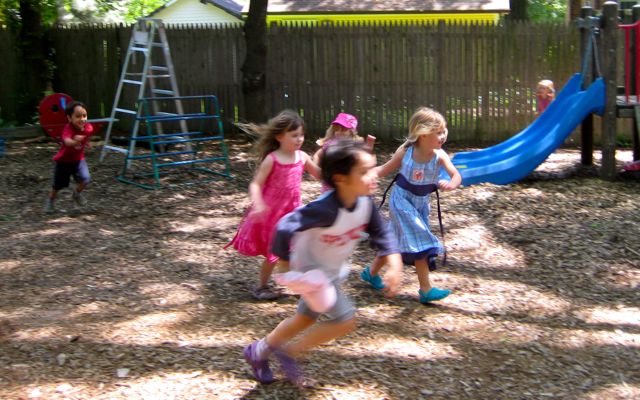Taking it to the Streets
Go outside and play—on the street or sidewalks, in empty lots, backyards, front yards. A child could join a roving crowd of other children, younger and older, and only come inside when the streetlights came on. Even then, there are a whole host of games and activities designed specifically FOR streetlights and the lightning bug glow adventures for those special nights designated for play into the evening hours.

In the article, What Kids Don’t Get To Do Anymore and Why by John A. Sutterby, considers the implications of keeping our children inside and pre-planned. The article is the finalist for the Annual Theme 2009 issue of Childhood Education.
Certainly, in some parts of the country and other parts of the world, neighborhood child-led, open-ended play as documented in the “golden age of childhood” still exists. On the other hand, it is common for children in urban and especially suburban settings to be scheduled, watched, and guided by adults rather then left to their own pursuits.
Sutterby traces and connects parent anxiety and shifting social norms that have been strengthened through heightened awareness from information sharing (media, consumer alerts, etc.) and how these have impacted and affected parent perceptions and in turn children’s play opportunities. Results include obesity to a disconnect with the natural world, not only in terms of nature, but specifically in terms of geography—simply knowing how to navigate and get around in the neighborhood—gaining first hand experiences with shortcuts, long-way-‘rounds, and how neighborhoods and cities are designed and houses and buildings are constructed. Another consequence is also experiential—testing the waters of planning and organizing, trying/failing, and what I see as cultivating team effort and leadership skills independent of adult intervention.
These ideas are all ones I consider when creating a time and a place for social-dramatic play. It is, what it is--after all. Once acknowledged, I am sure we can creatively think of ways around it. Our Cooperative School designates a space, The Imagination Station, and a time, 30 to 45-minutes windows, for children to pursue what resembles the “neighborhood play.” This is social-dramatic play time, not time to put on a show, but to create play scenarios, or what we call play arcs. We view this as a very important time to explore ideas, situations, and to problem-solve. Initially, the adult "plays" as an older sibling or neighbor-child, but eventually she or he must remove that adult presence all together. The children practice planning out scenarios and roles, some simple, some more complex.
Yes, this is scheduled and quite purposeful, but it is designed as practice for “taking it to the streets.” In our case, the play spills out later in the playground, and it is our hope that the kids who attend The Cooperative School will take it to their next destinations—elementary schools and their own neighborhoods.
Tonight, play kick the can or olley, olley, oxen free, catch some lightning bugs and tomorrow, get lost in your neighborhood, miss lunch, come home and eat all you can hold. And then go back outside.

